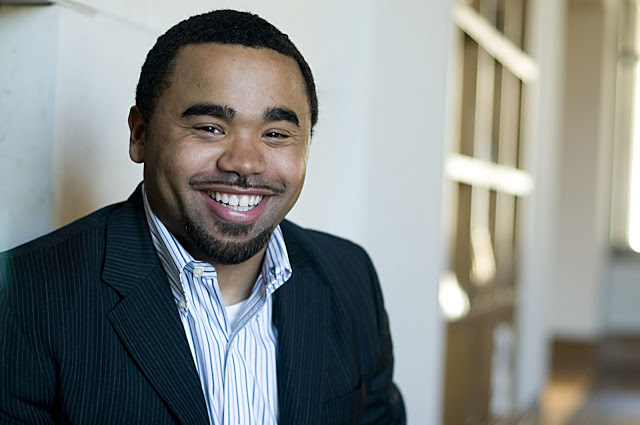
Former three-time Pro Bowl NFL linebacker
LaVar Arrington should be a model for how pro athletes can excel in their post-athletic careers. He is a popular sports journalist, a family man with young kids, and an entrepreneur who is on a crusade to develop the next generation of football players with his cutting edge training system that focuses on safety and the fundamentals. We previously profiled Arrington’s burgeoning company, Xtreme Procision, on
Access Athletes.
Somehow, Arrington, the legendary Penn State All-American who was drafted No. 2 overall in the 2000 NFL Draft, still finds the time to educate elite athletes. Last month he was a guest speaker at the NFL’s 16
th annual Rookie Symposium in Aurora, Ohio, marking the second straight year he was invited to share his story and advice to the league’s newest draftees. The four-day orientation introduces the rookies to life in the NFL by emphasizing the sport’s legacy, tradition of character and leadership, as well as social and professional responsibility. Whether he is speaking to incoming rookies or
current college players, as a respected broadcaster who has fine-tuned his public speaking skills, Arrington is able to captivate younger athletes with his words of wisdom.
As part of the NFL’s transition program, Arrington was recently certified as one of twelve “transition coaches” who will be working with former and current NFL players toward preventing some of the problems that frequently surface when it’s time to retire. For 8 months, LaVar underwent extensive training on career transition, mental health, suicide intervention, conflict resolution, and relationship-management skills.
Arrington spoke to Access Athletes about his advice for how rookies can make a successful transition to the NFL and maximize their careers, both on and off the field.
Matthew Allinson: What advice would you give to the incoming rookies on how to make a successful transition to the NFL?
LaVar Arrington: I think that the advice that remains consistent and remains true is “Don’t lose focus.” You actually have to be more focused, someway, somehow. When you find yourself going into the NFL, it’s easy to lose focus on the game. Now, it’s cars, it’s a home, it’s women to a different capacity. It’s a whole lot of different things that can turn into your main focus. And I think that when a guy is humble enough to continue to be hungry, to be focused on being a better player than what they were when they played in college, that’s the biggest key. Learning and being open, and understanding that you’re playing against grown men now. It’s not college, where you may have an 18-year-old, a 19-year-old, or a couple of grown people who come back to play. It’s a league full of hard-nosed, prepared individuals who are making money to “whoop” your tail or vice versa, whatever it may be.
I think a lot of times, young guys get it; but, they don’t really really get it. I think that they understand that they’re going to have to work harder. I think that they understand it’s a different game with you being paid to play now and there’s a lot of glitz and glamour that goes with being an NFL player. I think they get that, but I don’t think they fully understand that what helped get them there are the things that they have to do even more. So, you got to work harder.
Say you listen to me, and I helped you get there. You don’t just stop listening to me now that you’ve made it: “Oh, I made to the NFL. I don’t need to listen to LaVar anymore.” You have to continue to listen to those people. I think that guys kind of lose sight of that. I think that would be the biggest advice that I could give to a young guy without going into too many different places. I think that guys have got to remember what helped them and what molded them to get there. Now that chapter of college is closed. But this next chapter, it takes more work. It’s harder work. And if you don’t approach it that way, you stand a great chance of not being successful. It’s a very unforgiving league. It really is. Better that you believed it and go into it understanding that he may know what he’s talking about by telling you this than you finding out the hard way—because then it may be too late.
Allinson: Looking back at it, was there a particular lesson you could really draw on from the temptation and adapting to the NFL lifestyle?
Arrington: I just lost focus on being the best player I could possibly be. You know, I was the #2 pick in the draft. A lot of people were giving me attention. You’re meeting people that you never met before—people that you’ve watched on television and seen singing or whatever it may be. And it’s difficult… It’s difficult when you don’t have someone in your ear that has been through it, telling you to do it differently than what you’re doing. I had to learn it—I was a crash-test dummy.
For me, my biggest challenge was the lifestyle. It’s almost impossible not to find yourself involved in it. You’re young and you get exposed. I could see for my children that that stuff won’t bother them. They’re already exposed to it. Their uncles are some of the most famous people in the world and their exposed to so much. But if you’re not exposed to it and you’re not prepared for it, you got to learn it. You got to figure it out.
For me, that was quite an experience—getting acclimated. And I did. I got reeled back in and really got focused. I started off really slow my rookie year—I wasn’t in shape like I should have been. I wasn’t prepared the way I should have been early on, and I paid the price for it. I didn’t start and didn’t have quite an impact the way I thought I’d come into the league and have an impact. And that was my wake-up call. It was like “Oh no, I’m not going to be a bust.” There were a lot of veterans around me that kind of took the mentality that “We’re not going to let this go down that way.” They kind of reeled me in and got me going, and got me on the right foot.
By mid-way through my rookie season, I started to get it, started to understand it, and really started to apply it. And [I] really almost played well enough to make the Pro Bowl my rookie year. It didn’t happen because you have to unseat Pro Bowl players to make it into the Pro Bowl. But I came back that next year with the focus of being a “one-man-wrecking-crew” in my own right and contribute the way I needed to contribute to the team and actually step into a leadership role onto the team. Really work myself into being respected as a leader. That was the biggest challenge—was just coming in and maintaining the focus you had to get there. You got the eye of the tiger to get to the league.
Allinson: It’s like you made it and then you let your guard down.
Arrington: Yeah, you take a deep breath, and during that deep breath, do you bring yourself back to the realization that I got to do this all over again, or do you just keep thinking, “I made it?”
Allinson: Who were some of the older guys that kind of took you under their wing?
Arrington: Bruce Smith, Shawn Barber, Kevin Mitchell, Darrell Green was a vital part, Sam Shade, Marco Coleman was an awesome guy, and Derek Smith. There were a lot of guys that really took a very active interest in my development and I’m so thankful that they did.
Allinson: And you were receptive to it. There are some guys who don’t really want the feedback.
Sports Illustrated estimated in 2009 that 78 percent of NFL players have gone bankrupt or are facing serious financial stress because of joblessness or divorce within two years of ending their playing careers. In light of the seemingly never-ending stories about NFL players going broke, could you talk about how you approached the business aspects of the game while you were in league and also what you think can be done to curb this systemic problem amongst NFL players?
Arrington: I think it’s the same thing that applies to the football aspect of it. You got to apply yourself and really be open to understanding that, you know, everything isn’t what it appears to be. I’m not one to tell someone that they can’t live life the way they want to live. If you worked hard enough to achieve high enough where you make the type of money to do some of the things that you do, who am I to tell you not to do it. But I would say that being responsible over yourself and how you do things… The one thing I would be wondering is how many of those individuals went broke based off of being unselfish. So many times people assume that guys go broke based off of spending habits and stuff like that. But it could have been…like for me, I know I took care of my family—took care of my mom and my dad, took care of my brothers, and at one point, took care of affairs with my in-laws just because I wanted to help.
Allinson: You were generous.
Arrington: Yeah, sometimes you have to make decisions that you might not necessarily want to make. Like for me, I’ve taken chances. I’ve taken risks doing business. A bad investment is an investment that goes bad in my book. Sometimes people make bad investments, where it’s like you buy jewelry and it didn’t make any sense for you to buy it, like a medallion or charm that covers your entire chest. That could be considered a bad investment.
For me, the reason why I say a bad investment isn’t a bad investment until it turns out not to be a good investment is because I’ve done things like invested in groups that go in and invest in island projects and different things. I’m a part of an investment group that went over to Turks and Caicos and I still to this day don’t know if it’s a good investment or bad investment because it’s still out there. It’s pending. Did we do the studies? Did we look at it? I mean I got married in Turks and Caicos. I love Turks and Caicos. It all depends.
I would always say, “Look if you can make money one time, you can make money two, three, four times.” So if you’ve made so many mistakes with what you’ve done while you were making a check in the NFL, I would ultimately say you got to take a good look at yourself and the same way you applied yourself to be able to make that type of dollar playing ball, you got to apply yourself to do it in other ways. Now it’s easier said than done, but that’s the reality of it. And I think the reason why guys go broke is because they don’t apply that.
So now you’re living off of savings and you learn a lot about money. You learn a lot about how $60 million doesn’t really mean $60 million. You learn a lot about how maintaining an “upkeep” is a large part—it doesn’t go anywhere. Your paycheck went somewhere, but if you have a lot of things, that “bill” doesn’t go anywhere. You got to be watchful over those things and, if you’re not, you have to at least be able to figure out ways to supplement your income. And that would be my advice.
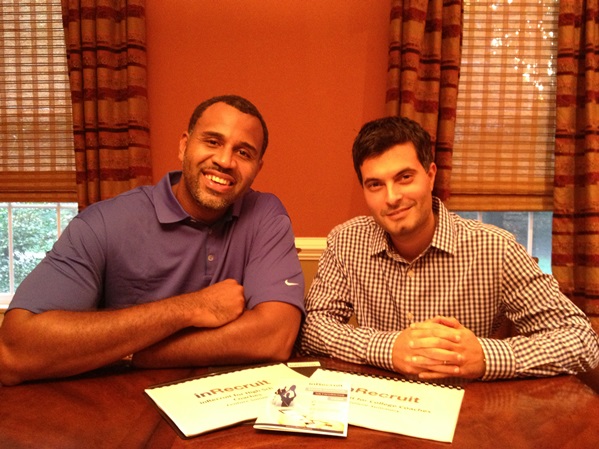

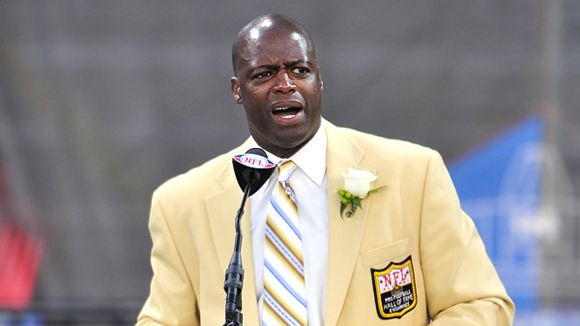
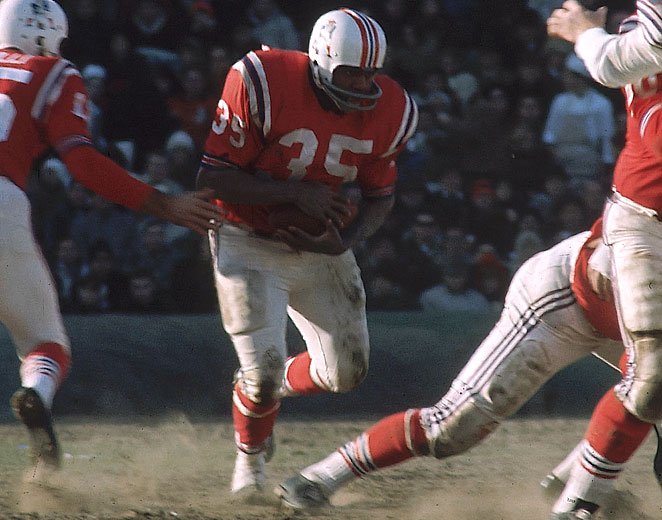

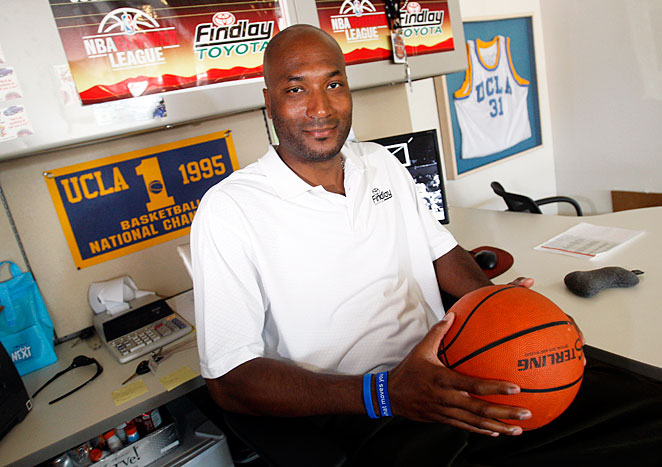


.jpg)

